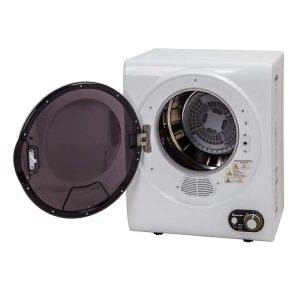Effective Strategies on How to Dry Clothes Without a Dryer
Drying clothes without a dryer is not only environmentally friendly but also cost-effective. Whether you’re looking to save energy, reduce utility bills, or simply embrace a more sustainable lifestyle, understanding how to dry clothes without a dryer can significantly benefit your household. In this comprehensive guide, we will explore various methods, tips, and tricks to ensure your clothes dry efficiently and remain in excellent condition.
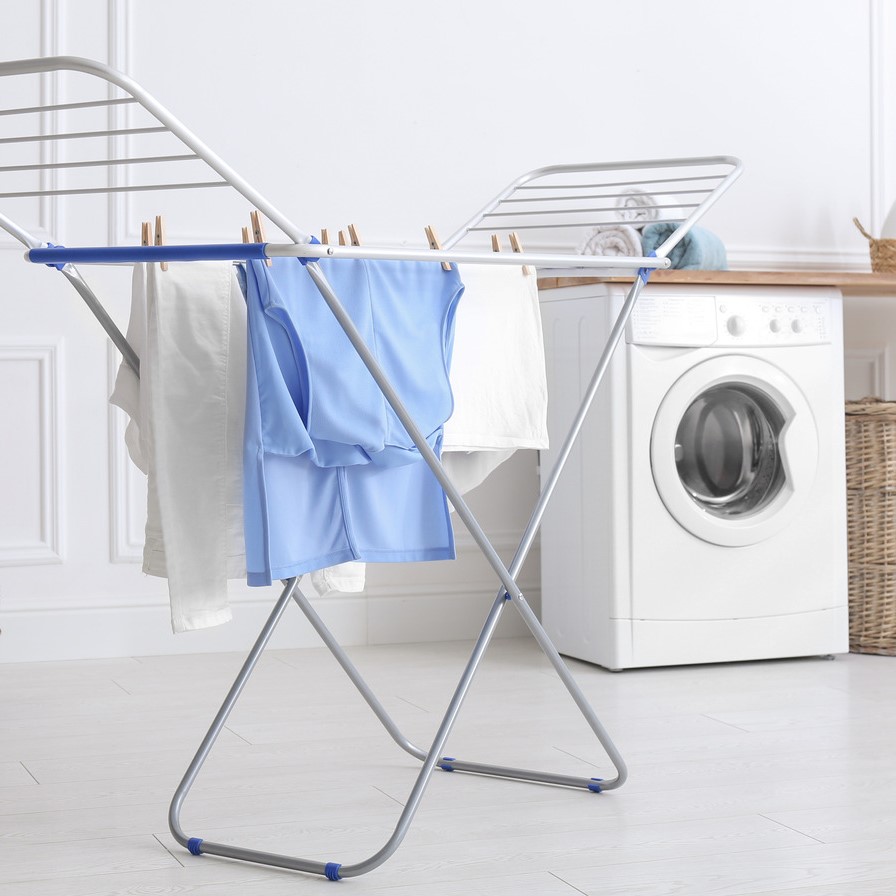 The Benefits of Drying Clothes Without a Dryer
The Benefits of Drying Clothes Without a Dryer
Choosing to dry your clothes without a dryer offers numerous advantages. Firstly, it reduces your energy consumption, leading to lower electricity bills and a smaller carbon footprint. Additionally, air drying is gentler on fabrics, helping your clothes last longer by minimizing wear and tear. Moreover, drying clothes naturally can prevent shrinking, fading, and other damage that high heat from dryers often causes. Lastly, it provides an opportunity to enjoy the fresh scent of naturally dried laundry, enhancing your overall laundry experience.
Environmental Impact
Dryers are one of the most energy-intensive appliances in a home. By opting to dry clothes without a dryer, you contribute to significant energy conservation. This reduction in energy use not only lowers your household’s carbon footprint but also helps combat climate change by decreasing greenhouse gas emissions. Furthermore, less reliance on electric dryers means fewer resources are consumed in the manufacturing and distribution of these appliances, promoting a more sustainable lifestyle.
Cost Savings
Electric dryers can be expensive to operate, especially if used frequently. Understanding how to dry clothes without a dryer can lead to substantial cost savings over time. Air drying eliminates the need for electricity altogether, reducing your monthly utility bills. Additionally, clothes dried naturally experience less wear and tear, decreasing the frequency of replacements and further saving money in the long run.
Fabric Care
Dryers often subject clothes to harsh heat and tumbling, which can weaken fibers and cause shrinkage, fading, and other forms of damage. By air drying your clothes, you maintain the integrity of the fabrics, ensuring they remain vibrant and fit true to size for a longer period. This method is particularly beneficial for delicate items and garments that require special care, such as wool, silk, and activewear.
Essential Tools and Equipment for Air Drying
To effectively dry clothes without a dryer, having the right tools and equipment is essential. These items facilitate efficient air circulation, maximize drying space, and help maintain the quality of your laundry. Below are some must-have tools for successful air drying.
Drying Racks
Drying racks are versatile and essential for air drying clothes indoors or outdoors. They come in various styles, including foldable, adjustable, and multi-level designs, allowing you to choose one that fits your space and drying needs. Select a rack with sturdy construction and ample space to accommodate different types of garments, ensuring efficient drying without overcrowding.
Clotheslines
Clotheslines are a traditional and highly effective method for drying clothes outside. They are simple to install and provide excellent airflow, which speeds up the drying process. Opt for a retractable or tensioned clothesline to save space when not in use. Additionally, consider using pegs or clothespins to secure garments firmly, preventing them from being blown away or becoming misshapen during drying.
Hangers and Hooks
Using hangers and hooks can streamline the drying process, especially for garments that are prone to wrinkling or need to retain their shape. Hang shirts, dresses, and other structured items on sturdy hangers, and utilize hooks in strategic locations to maximize drying space. This method not only facilitates faster drying but also keeps your clothes organized and wrinkle-free.
Portable Drying Racks
Portable drying racks offer flexibility and convenience, making them suitable for various spaces and situations. These racks are lightweight, easy to move, and often foldable for easy storage. They are ideal for small apartments, dorm rooms, or any area where space is limited. Invest in a portable rack that provides sufficient drying space and stability to handle different types of clothing.
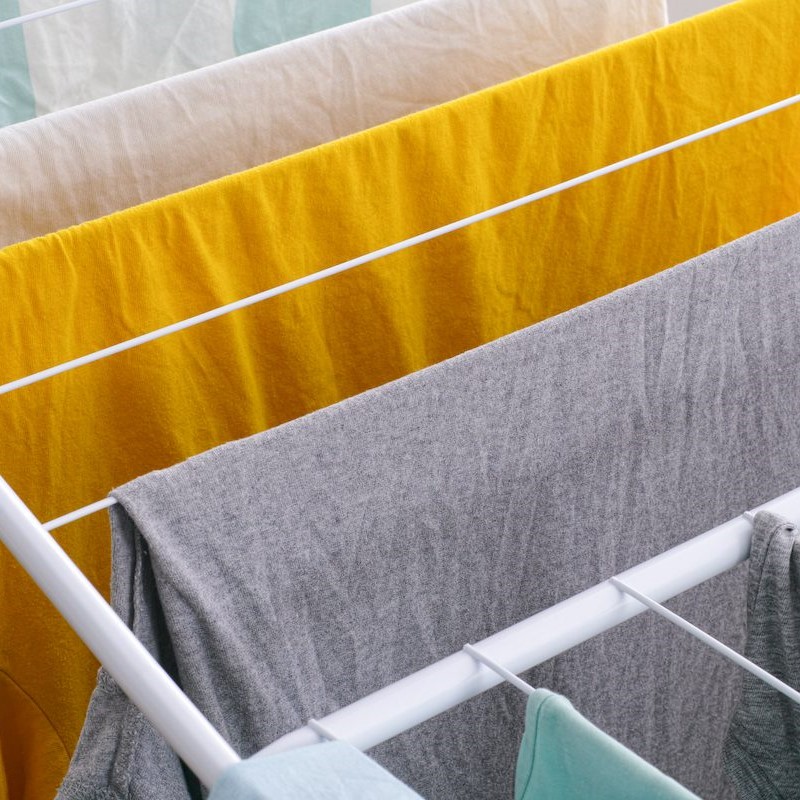 Innovative Methods to Dry Clothes Without a Dryer
Innovative Methods to Dry Clothes Without a Dryer
Exploring innovative methods to dry clothes without a dryer can enhance efficiency and effectiveness. These techniques utilize various principles of airflow, heat, and placement to expedite the drying process while maintaining fabric quality.
Utilizing Natural Airflow
Harnessing natural airflow is one of the simplest and most effective ways to dry clothes without a dryer. Position your drying rack or clothesline near windows, open doors, or in well-ventilated areas to maximize air circulation. Cross-ventilation, where air flows through your laundry area from different directions, can significantly speed up the drying process. Additionally, opening windows or using fans can enhance airflow, ensuring clothes dry evenly and quickly.
Sun Drying
Sun drying is a traditional method that leverages the sun’s natural heat and ultraviolet (UV) rays to dry clothes efficiently. Spread garments evenly on a clothesline or drying rack, ensuring they receive ample sunlight. Sun drying not only accelerates the drying process but also naturally sanitizes your clothes by killing bacteria and removing odors. However, be mindful of prolonged sun exposure, which can cause colors to fade over time. To prevent this, consider drying colored garments inside out or using a drying rack in partially shaded areas.
Indoor Drying Solutions
When outdoor drying is not feasible, indoor drying solutions provide an excellent alternative. Utilize dehumidifiers or exhaust fans in your laundry area to reduce humidity levels and promote faster drying. Placing a drying rack in a warm, dry room can also enhance the efficiency of indoor drying. Additionally, arranging clothes with ample space between them ensures better airflow, preventing dampness and mold growth.
Heat-Assisted Air Drying
Incorporating heat sources can expedite the drying process without using a dryer. Place drying racks near radiators, space heaters, or under ceiling fans to utilize the ambient warmth. However, exercise caution to avoid overheating or causing any fire hazards. Ensure that clothes are not in direct contact with heating elements and maintain a safe distance to prevent damage to fabrics.
Towel Drying for Quick Results
For garments that need to dry quickly, towel drying is an effective technique. Lay a clean, dry towel on a flat surface and place the wet clothing item on top. Gently roll the towel and garment together, pressing firmly to absorb excess moisture. This method significantly reduces drying time, making it ideal for items that need to be worn or used promptly. After towel drying, hang the garment to finish drying naturally.
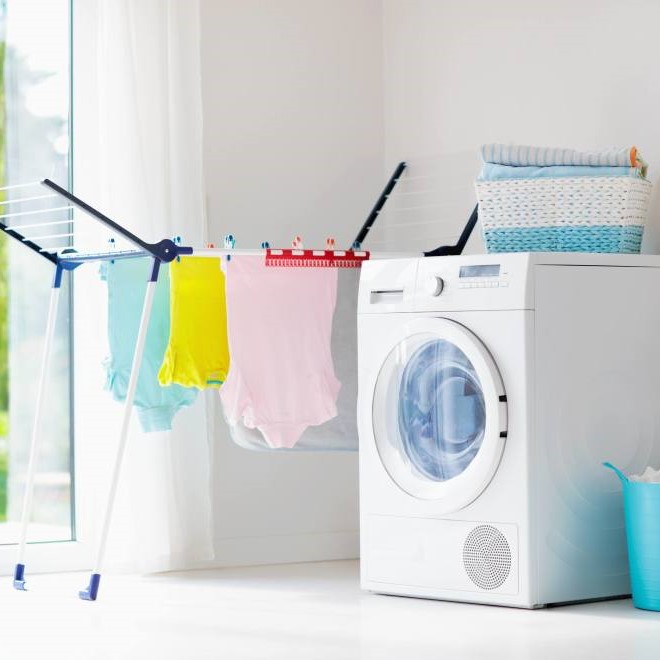 Tips for Efficient Air Drying
Tips for Efficient Air Drying
Implementing specific tips can enhance the efficiency and effectiveness of drying clothes without a dryer. These strategies focus on optimizing airflow, reducing moisture, and maintaining fabric quality.
Proper Washing Techniques
Efficient drying begins with proper washing techniques. Avoid overloading the washing machine, as excessive clothes can retain more moisture and take longer to dry. Use the appropriate amount of detergent to prevent residue buildup, which can impede airflow during drying. Additionally, select the right wash cycle for different types of fabrics, ensuring clothes come out as dry as possible before placing them on the drying rack.
Spin Cycle Optimization
Maximizing the spin cycle in your washing machine can significantly reduce the moisture content in clothes, speeding up the drying process. Ensure that your washing machine’s spin speed is set to the highest appropriate level for your garments. This extra spin removes more water, allowing clothes to dry faster and more efficiently when laid out to air dry.
Strategic Clothing Placement
Strategically arranging clothes on drying racks or clotheslines ensures optimal airflow and drying speed. Space garments evenly, avoiding overlapping or crowding, which can trap moisture and prolong drying times. Hang larger items, such as towels and jeans, separately from smaller garments to allow ample space for air circulation. Additionally, flipping clothes halfway through the drying process ensures both sides dry evenly.
Regularly Rotating Clothes
Regularly rotating clothes on the drying rack or clothesline enhances airflow around each garment, promoting faster and more uniform drying. Flip or rearrange clothes periodically to expose damp areas to fresh air and prevent mildew or odor buildup. This practice is especially important for densely packed drying racks or when drying clothes indoors with limited ventilation.
Using Ventilation Aids
Enhancing ventilation in your laundry area can significantly improve drying efficiency. Utilize fans, exhaust vents, or open windows to increase airflow, reducing drying times and preventing moisture accumulation. Proper ventilation also helps maintain a comfortable indoor environment, preventing dampness and mold growth in your home.
Overcoming Common Challenges in Air Drying
While drying clothes without a dryer is highly effective, it can present certain challenges. Addressing these issues proactively ensures a smooth and efficient drying process.
Dealing with Humidity
High humidity levels can slow down the drying process and cause clothes to remain damp for extended periods. To combat this, use dehumidifiers in your drying area to reduce moisture levels and promote faster drying. Additionally, choosing well-ventilated spaces and avoiding drying clothes in small, enclosed rooms can help mitigate the impact of humidity on your laundry.
Preventing Musty Odors
Clothes that do not dry completely can develop musty odors and mildew. To prevent this, ensure that clothes are thoroughly dried by optimizing airflow and avoiding overcrowding on drying racks. Regularly clean and maintain your drying equipment to eliminate any mold or mildew buildup. If musty odors persist, consider re-washing the affected garments and allowing them to dry in a well-ventilated area.
Managing Limited Space
Limited space can make air drying challenging, especially in small apartments or homes. Utilize vertical drying racks or multi-tiered clotheslines to maximize drying space without occupying too much room. Additionally, consider using hooks or wall-mounted drying systems to take advantage of vertical surfaces, freeing up floor space for other activities.
Handling Different Fabric Types
Different fabrics have varying drying requirements, and managing them effectively can prevent damage and ensure optimal drying. For delicate fabrics, use padded hangers or mesh drying racks to avoid stretching or distortion. Heavier items, such as denim or towels, should be dried separately from lighter garments to allow sufficient airflow and prevent prolonged drying times.
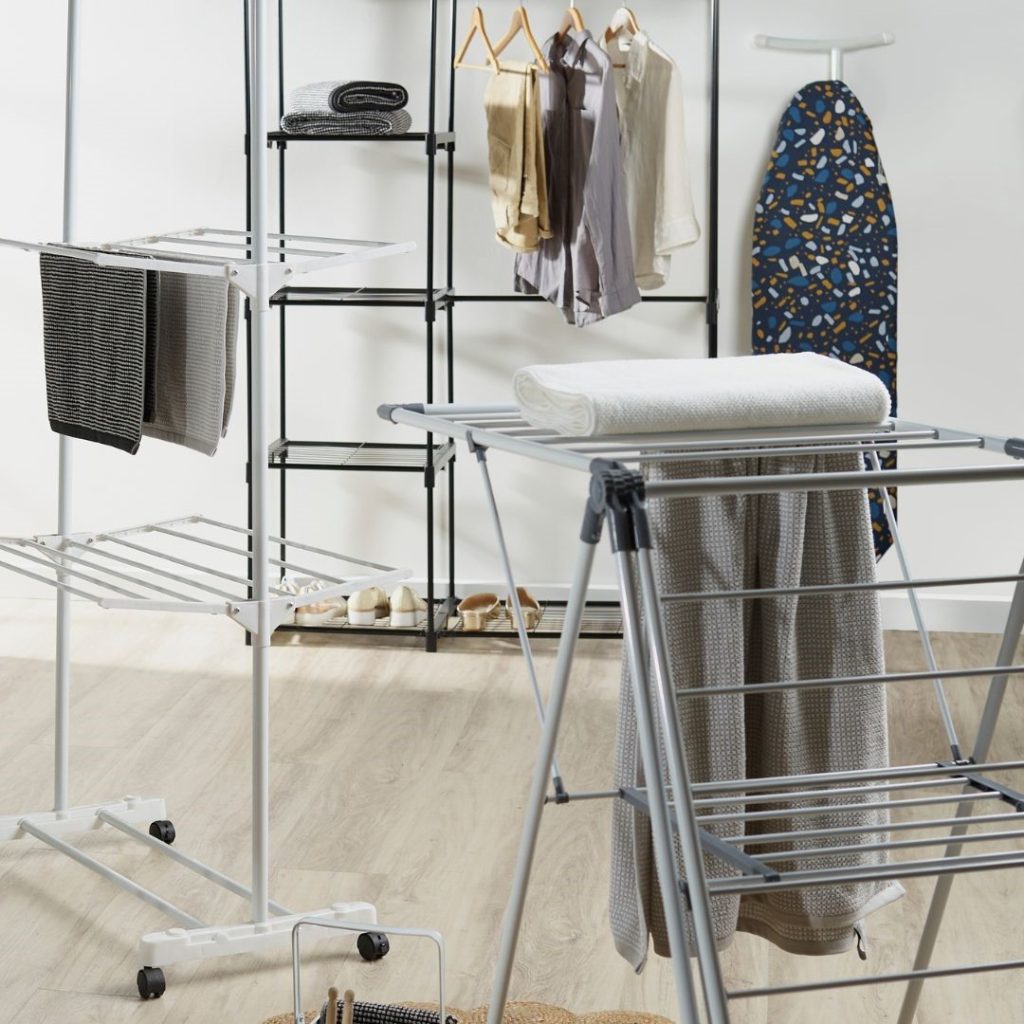 Enhancing the Drying Process with Additional Techniques
Enhancing the Drying Process with Additional Techniques
Incorporating additional techniques can further enhance the efficiency and effectiveness of drying clothes without a dryer. These methods complement traditional air drying and address specific drying needs.
Using Drying Balls
Drying balls, typically made of wool or rubber, can be added to a drying rack to improve airflow and prevent clothes from clumping together. They help separate garments, allowing air to circulate freely around each item and speed up the drying process. Additionally, wool drying balls can naturally soften fabrics without the need for chemical fabric softeners.
Ironing and Steaming
Ironing or steaming clothes while they are still slightly damp can help remove wrinkles and reduce drying time. The heat from the iron or steamer evaporates remaining moisture, ensuring clothes dry thoroughly and remain crisp and smooth. This technique is especially useful for shirts, blouses, and other garments that require a polished appearance.
Utilizing Absorbent Materials
Incorporating absorbent materials into your drying setup can help manage moisture more effectively. Placing absorbent towels or mats beneath drying racks can catch excess water, preventing it from pooling and causing dampness in your home. Additionally, using moisture-wicking fabrics as liners can enhance the absorption of residual moisture from clothes, promoting faster drying.
Leveraging Technological Innovations
Modern technology offers innovative solutions to improve air drying efficiency. Smart drying racks equipped with built-in sensors can monitor humidity levels and adjust airflow accordingly, ensuring optimal drying conditions. Additionally, portable electric fans or compact dehumidifiers can be integrated into your drying area to enhance airflow and reduce drying times without relying on traditional dryers.
Maintaining and Caring for Your Air-Drying Equipment
Proper maintenance of your air-drying equipment ensures its longevity and optimal performance. Regular care and upkeep prevent wear and tear, ensuring your drying racks and clotheslines remain functional and effective.
Cleaning Drying Racks and Clotheslines
Regularly clean your drying racks and clotheslines to remove dust, dirt, and residue from previous drying cycles. Wipe down racks with a damp cloth and mild detergent to eliminate any buildup that could attract mold or mildew. For clotheslines, inspect for signs of wear or damage, and repair or replace components as needed to maintain their strength and stability.
Inspecting for Wear and Tear
Periodically inspect your drying equipment for signs of wear and tear, such as rust, broken parts, or weakened structures. Addressing these issues promptly prevents further damage and ensures the safety and effectiveness of your drying setup. Replace any worn or damaged parts to maintain the integrity of your drying equipment and avoid potential accidents.
Storing Drying Equipment Properly
When not in use, store your drying racks and clotheslines in a clean, dry place to protect them from environmental damage. Foldable and portable drying racks should be disassembled and stored in a compact manner, saving space and preventing deformation. For outdoor clotheslines, consider using protective covers or retractable models to shield them from harsh weather conditions.
Lubricating Moving Parts
If your drying equipment has moving parts, such as adjustable racks or retractable clotheslines, regularly lubricate these components to ensure smooth operation. Use appropriate lubricants recommended by the manufacturer, avoiding excessive application that could attract dirt and debris. Proper lubrication reduces friction and prevents wear, extending the lifespan of your drying equipment.
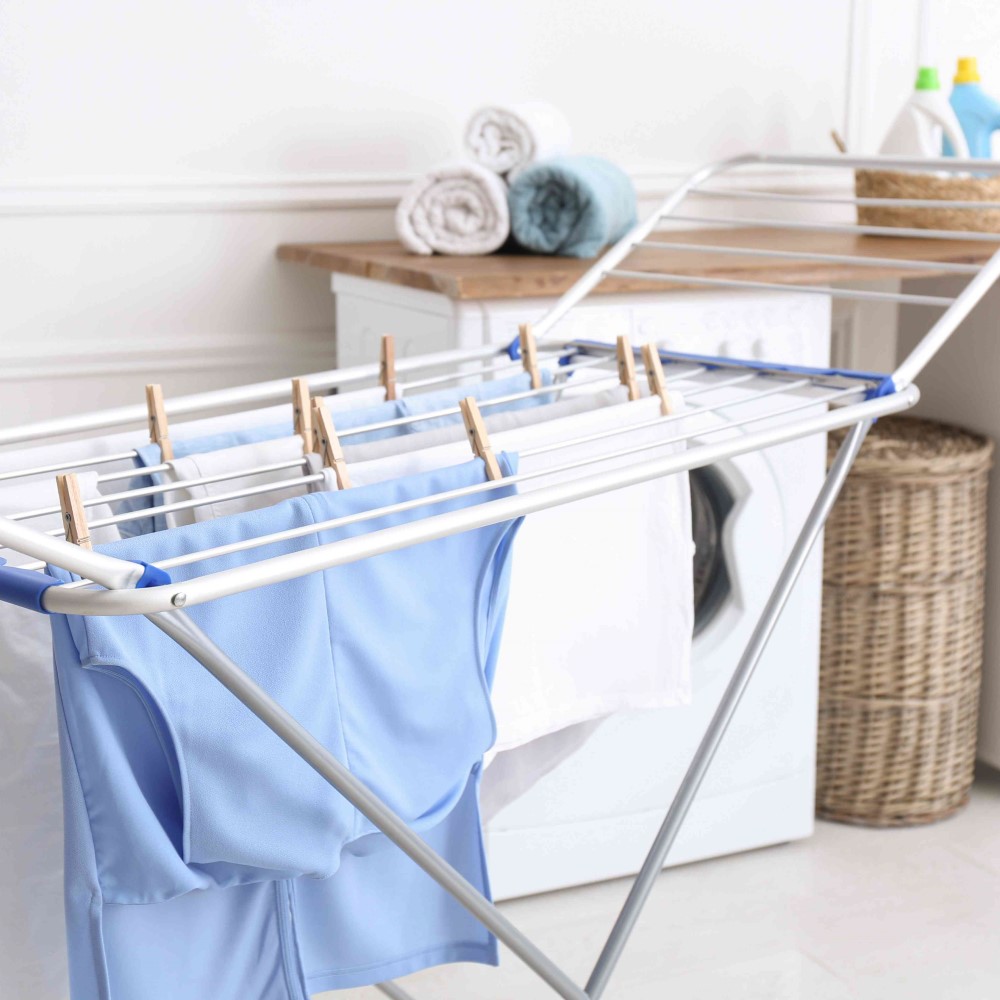 Conclusion
Conclusion
Learning how to dry clothes without a dryer empowers you to adopt a more sustainable and cost-effective approach to laundry. By leveraging various air drying methods, optimizing conditions, and maintaining your drying equipment, you can ensure your clothes dry efficiently while preserving their quality. Embrace these strategies to reduce energy consumption, save money, and contribute to a healthier environment. With the right techniques and tools, drying clothes without a dryer becomes a seamless and rewarding aspect of your daily routine.
